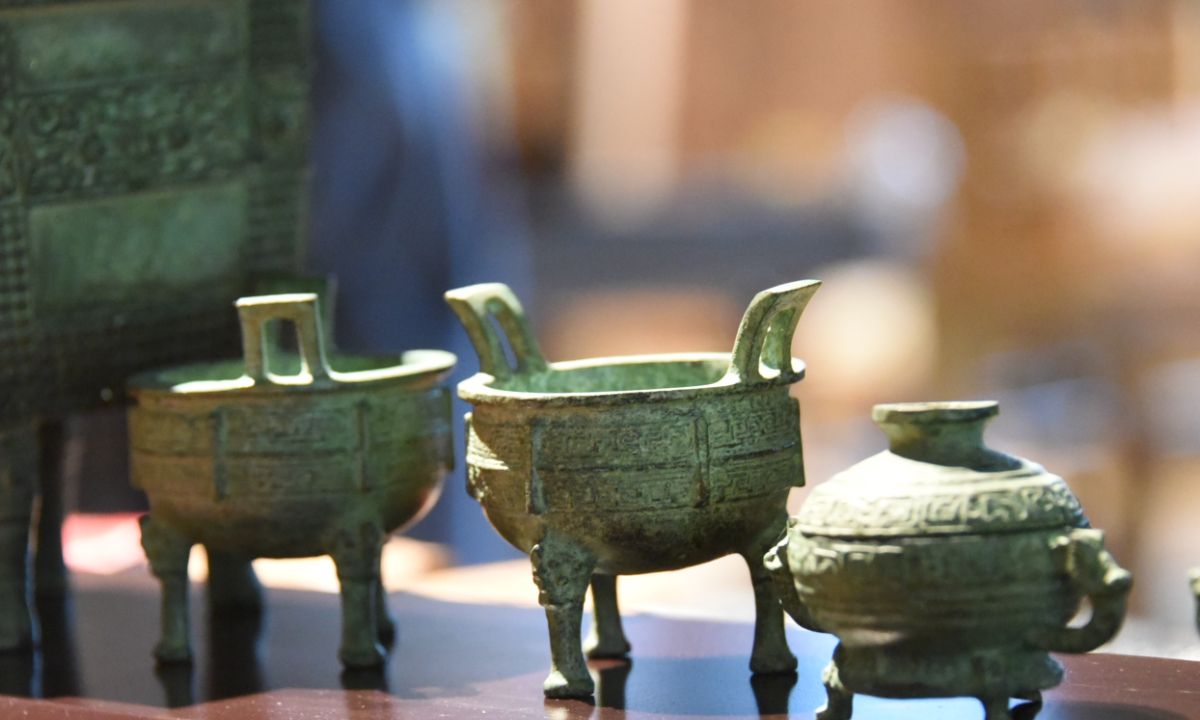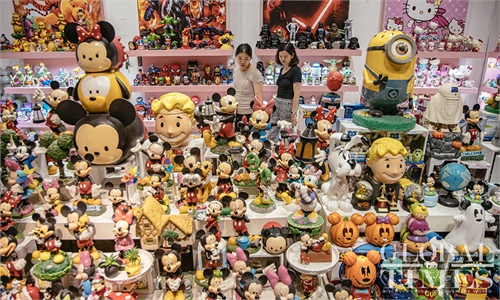Editor's Note:
China has launched a series of events in 2022 marking the 50th anniversary of the World Heritage Convention, which was adopted on November 16, 1972. Now ratified by 194 countries, the Convention has produced a list of over 1,100 various heritage sites, 56 of which are in China.
As Xi Jinping, general secretary of the Communist Party of China Central Committee, said in a report for the 20th National Congress of the Communist Party of China, "We will put more effort into protecting cultural artifacts and heritage, better protect and preserve historical and cultural heritage in the course of urban and rural development, and build and make good use of national cultural parks. We will encourage positive interplay between culture and tourism and advance deeper integration of the two sectors."
In this series, the Global Times will present interviews with scholars and experts to give readers a better understanding of the progress China has made over the past decade in preserving and promoting its world heritage sites. This is the second story of the series in which we would like to Introduce how the cultural and create a new products keep the China's world heritage sites "alive." The first one: China's world heritage sites convey country's profound civilization

A popsicle shaped like the Yungang Grottoes Photo: VCG
From bookmarks sporting pictures of the Forbidden City and popsicles shaped like the Great Wall to a digital collection of paintings of the Honghe Hani Rice Terraces and a virtual ambassador of the Dunhuang Mogao Grottoes, China's world heritage sites are becoming more and more part of people's daily lives thanks to trendy and exquisite cultural creative products.
Cultural industry insiders and experts said China's cultural creative products have been booming alongside the nation's growing technology sector in the wake of the Chinese government's call to strengthen its "soft power" and extend international influence.
Cultural product craze
"If the foundation of world heritage sites is culture, cultural creative products are the lifeblood that allows them to come 'alive,'" Wang Siyu, director of Public Archaeology and Arts in Peking University, told the Global Times on Monday.
He pointed out that in the past, cultural creative products were mainly common souvenirs such as key rings, fridge magnets and postcards and consumers were mainly history lovers who bought them while visiting the heritage sites. But now, the diverse range of cultural creative products such as archaeological blind-boxes and 3D printed models have stirred the interest of a broader demographic including the young generation as well as those who live abroad, inspiring them to visit the actual sites upon which these products are based.

Models of bronze wares in archeological blind-boxes Photo: VCG
"Cultural creative products break through barriers in promoting cultural heritage sites," said Wang.
In 2020, more than 124,000 types of cultural and creative products were developed by museums across the country, raking in over 1.1 billion yuan ($152.7 million) in revenue, Li Qun, director of the National Cultural Heritage Administration, said at an press conference.
A research report released in 2020 shows that 53 percent of consumers of cultural creative products were born after 1990, while 30 percent were part of China's Post-1995 generation, Xinhua reported.
"The wide popularity of cultural creative products among the young generation could not have been achieved without the participation of designers with brilliant ideas," Zhang Hua, manager of the Cultural Creative Products Sales Department at the Yungang Grottoes, told the Global Times on Monday.
Zhang noted that for years the Yungang Grottoes has been cooperating with some young designers, inviting them to the site so that they could find inspiration for a new range of products. Most recently, a design brand named Ruhui extracted at least 60 patterns from the statues in the grottoes after a visit in 2021. The young designers used these patterns on new products such as bags, clothes, wallets and then skyrocketed to fame after debuting them at the autumn and winter fashion shows in Shanghai.
"We have 252 caves and more than 51,000 statues here representing the outstanding Buddhist art in China during the 5th and the 6th centuries. We hope to give full play to the modern value of Yungang Grottoes," Zhang said.
From increased self-confidence
Song Hua, director of the Henan Museum's Cultural Products Department, told the Global Times on Monday that China's cultural creative products have combined with a lot of technological innovation to make breakthroughs in expanding the influence of Chinese culture, and now cultural creative products are entering a new stage that combines the real and virtual worlds.
Recently, the Henan Museum in Central China's Henan Province launched a virtual commune on the metaverse.
"We created three virtual figures which can introduce visitors to some original historical sites, like the Yin Ruins World Heritage Site, to see what the last capital of the Shang Dynasty (c.1600BC-1046BC) looked like," Song said, adding that this new method can build a connection between cultural resources and visitors.
In March, the State Council released the Opinions on Promoting the Implementation of the National Cultural Digitalization Strategy, which proposed to promote the deep integration of culture and technology, and build a big data system showing a panorama of Chinese culture by the end of 2035.
Wang pointed out that the craze for the museum's cultural creative products basically stems from people's increased cultural self-confidence, and he suggested more research on world heritage sites need to be carried out.
"For example, if we could know how the jade relics from the Ruins of Liangzhu City (3300BC-2300BC) were made, and who used them, we could derive more exquisite and creative products," he said.

